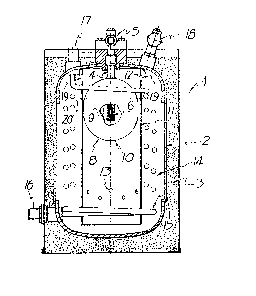Some of the information on this Web page has been provided by external sources. The Government of Canada is not responsible for the accuracy, reliability or currency of the information supplied by external sources. Users wishing to rely upon this information should consult directly with the source of the information. Content provided by external sources is not subject to official languages, privacy and accessibility requirements.
Any discrepancies in the text and image of the Claims and Abstract are due to differing posting times. Text of the Claims and Abstract are posted:
| (12) Patent: | (11) CA 1297311 |
|---|---|
| (21) Application Number: | 1297311 |
| (54) English Title: | LIQUID COOLERS |
| (54) French Title: | REFROIDISSEUR DE LIQUIDE |
| Status: | Expired and beyond the Period of Reversal |
| (51) International Patent Classification (IPC): |
|
|---|---|
| (72) Inventors : |
|
| (73) Owners : |
|
| (71) Applicants : | |
| (74) Agent: | LAVERY, DE BILLY, LLP |
| (74) Associate agent: | |
| (45) Issued: | 1992-03-17 |
| (22) Filed Date: | 1988-04-12 |
| Availability of licence: | N/A |
| Dedicated to the Public: | N/A |
| (25) Language of filing: | English |
| Patent Cooperation Treaty (PCT): | No |
|---|
| (30) Application Priority Data: | |||||||||
|---|---|---|---|---|---|---|---|---|---|
|
A B S T R A C T
A fluid cooler comprising:
(i) a housing having an inlet and an outlet for
refrigerant and an inlet and an outlet for fluid to be
cooled;
(ii) a chamber located in the housing and in
engagement with the housing about the inlet for
refrigerant, the chamber having openings therein to permit
refrigerant to pass from the chamber into a space defined
between the housing and the chamber;
(iii) a conduit for passage of fluid to be cooled
therethrough, the conduit located within the space and
extending from the inlet to the outlet for the fluid to
be cooled, and
(iv) a float controlled valve located in the
chamber for control of ingress of liquid refrigerant into
the chamber.
Note: Claims are shown in the official language in which they were submitted.
Note: Descriptions are shown in the official language in which they were submitted.

2024-08-01:As part of the Next Generation Patents (NGP) transition, the Canadian Patents Database (CPD) now contains a more detailed Event History, which replicates the Event Log of our new back-office solution.
Please note that "Inactive:" events refers to events no longer in use in our new back-office solution.
For a clearer understanding of the status of the application/patent presented on this page, the site Disclaimer , as well as the definitions for Patent , Event History , Maintenance Fee and Payment History should be consulted.
| Description | Date |
|---|---|
| Inactive: IPC deactivated | 2011-07-26 |
| Inactive: IPC from MCD | 2010-02-01 |
| Inactive: First IPC derived | 2010-02-01 |
| Inactive: First IPC derived | 2010-01-30 |
| Inactive: IPC expired | 2010-01-01 |
| Inactive: IPC from MCD | 2006-03-11 |
| Inactive: IPC from MCD | 2006-03-11 |
| Inactive: IPC from MCD | 2006-03-11 |
| Inactive: IPC from MCD | 2006-03-11 |
| Time Limit for Reversal Expired | 1998-03-17 |
| Letter Sent | 1997-03-17 |
| Grant by Issuance | 1992-03-17 |
There is no abandonment history.
Note: Records showing the ownership history in alphabetical order.
| Current Owners on Record |
|---|
| GSA INDUSTRIES (AUST.) PTY. LTD. |
| Past Owners on Record |
|---|
| ROY GEORGE HILTON |